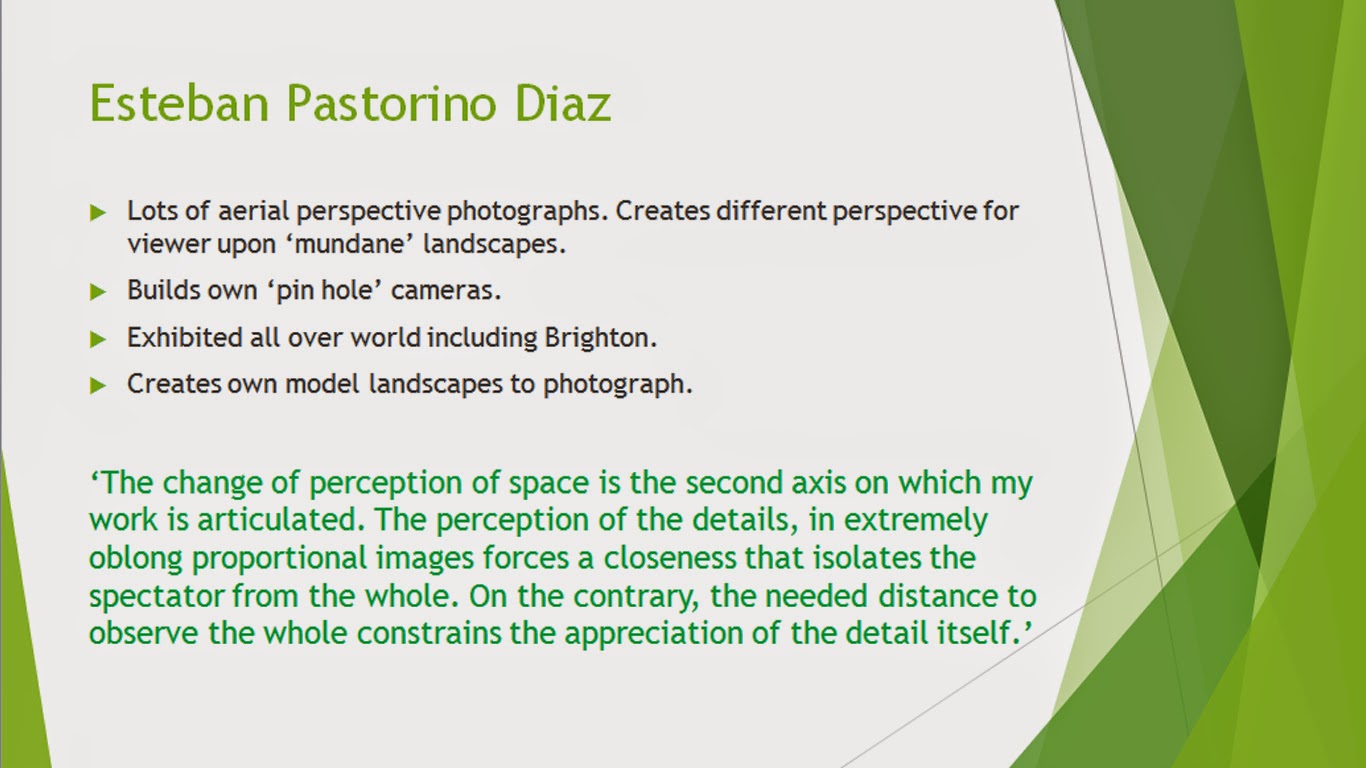Victor Burgin - Thinking Photography: Photography, Phantasy, Function
"Art is a set of 'techniques' for upsetting routine perceptions of the world" - Schlovsky
I think this quote relates to this week's topic, since photographers take literal perceptions of landscapes and then subvert them to conform to their own artistic perceptions.Rodchenko states that conventionally photography will create 'the navel photo' by taken a picture with their camera rested on their stomach facing directly straight ahead. Rodchenko argues that photographers should experiment with using all different angles and compositions. The cultural imaginaries topic encourages imagination and not necessarily painting a literal portrait of something.
Oktyabr photography - Supported the development of 'specifically photographic' formal structures without the influence of 'bourgeois culture'
ROPF - Supported swift and effective communication that could easily be understood by everyone
Burgin argues that neither of these concepts were 'post-revolutionary' and probably disagreed with these theories since they don't particularly encourage imagination. Contemporary works critique Oktyabr for defying conventions.
Further points from the reading:
- Photography and classical painting both depend on 'camera obscura' - projecting light from 3D solid onto a plane surface. This conforms to geometric laws of light
- Freud - psychological investment in looking - creating scopophilia. Men look whereas women are only looked at
- Burgin argues that there is never 'just-looking;' There is always context with subject
- Shifts between voyeurism and narcissism
This is a screenshot from a student presentation. Analysing the psychology behind 'viewing' gives a reason for why photographers create cultural imaginaries. It suggests that the photographer may look at a subject in a different way to another person therefore will reflect their perspective through their photograph. This then allows the viewer to see from their point of view.
Esteban Pastorino Diaz
Diaz creates cultural imaginaries through his use of model landscapes. By physically creating the landscape he is able to portray a more accurate portrayal of his perspective.
The photo above denotes rows of identical houses across a lawn, which seems to represent a suburban lifestyle. Diaz' use of the tilt-shift effect makes the houses look much smaller but also draws attention to the houses in the front row. I like the use of bright colours and high contrast as it makes it look surreal.
Lauren Marsolier
Lauren Marsolier combines different photographs to create a new landscape. She explains that they are meant to reflect an unknown place.
The photograph above denotes a single house placed within a mountainous setting. I like the gradient of colours in the sky and the faded tones of the mountains, as I think this connotes a dream-like setting. This contrasts with the quite bright colours in the foreground, which makes it look unnatural and fantasy like.
Although I am fond of these photographers' work, I think for my own project I would prefer to document what is really there rather than creating my own landscape.








No comments:
Post a Comment